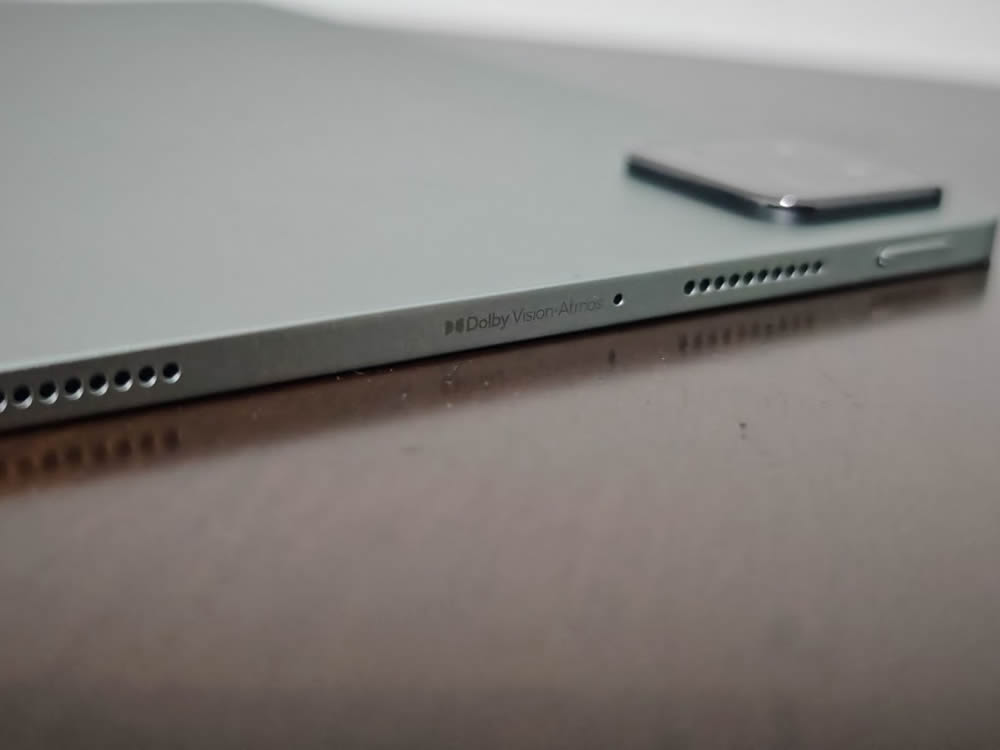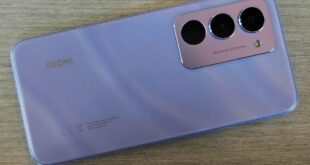The Xiaomi 15 Ultra is the top of the range phone by Xiaomi. It was released just last February 2025, and has earned a lot of attention from smartphone users.
Thanks to Xiaomi, I was loaned a the Silver Chrome unit for this review and here’s my personal take on the phone they dub as offering ‘Pinnacle photography’.
- Main highlights
- Design, body and durability
- Screen & Display
- Audio system
- Processor, RAM & Storage
- Software
- Camera
- Battery
- Conclusion
Main highlights
Before I delve into my personal opinion of the Xiaomi Pad 7, here’s the key highlights of this latest Xiaomi tablet.
It comes with a 11.2-inch 3.2K Crystal Clear Display that owns a high-resolution screen boasting a crisp 3200 x 2136 resolution and a pixel density of 345 PPI.
The screen also has a 144Hz adaptive refresh rate, and it supports HDR10 and Dolby Vision, along with a peak brightness of 800 nits.
The tablet also offers a seamless desktop-like experience through its Workstation mode and is powered by the very powerful Snapdragon 7+ Gen 3 Mobile Platform.
In addition, the tablet also comes refined with cutting-edge AI features such as Circle to Search, AI Writing, and AI Recorder.
There’s also Mi Canvas, which offers versatile digital workspace with intuitive tools and AI-powered features to transform simple sketches into refined artwork.
Video making is also perfected with AI Film which is also available in this tablet.
Design, Build Quality and Durability
Alright, so after using the Xiaomi Pad 7 for a while now, I think its sleek aluminum unibody feels really premium in hand, and at just 500g and 6.18mm thick, it’s surprisingly comfortable to hold for extended periods.
The bezels of this 11.2-inch display are nicely balanced allowing enough room for a decent grip.
The overall aesthetic is clean and modern, and it definitely doesn’t feel cheap with the camera bump disabling it from lying flat on its back.

While I haven’t intentionally put it through any stress tests, the rigidity of the chassis and design does inspires confidence.
There’s minimal flex when I apply pressure, and the finish on the aluminum back seems reasonably resistant to fingerprints and minor scratches so far.
Despite that, I’d still recommend a case for serious protection against drops, and would still smack a screen protector to add extra layer of protection to this charming tablet.
Also, in case you are wondering, the tablet unlocks with facial recognition, password and patern.
Screen & Display
The 11.2-inch 3.2K Crystal Clear screen and display is the real highlight of my experience.
The colors just pop; everything looks so vibrant and engaging, whether I’m watching videos or just browsing through photos.
I really appreciate is the smooth scrolling and responsiveness which comes due to the 144Hz refresh rate, elevating my gaming experience.
The brightness levels are also good as I haven’t had any major issues using it indoors under different lighting conditions.

Outdoor visibility is decent enough for occasional use, although direct sunlight can still be a bit challenging, as is typical with most tablets. If you are wondering, this tablet has Adaptive HDR with an 800 nits peak brightnee.
The viewing angles are also impressive; the picture quality holds up well even when I’m not looking at it straight on, which is great when I’m sharing the screen with someone.
It doesn’t have the deep blacks of an OLED but the contrast ratio is still quite good and able to provide pleasant viewing experience.
As for durability, while the exact type of glass for this tab hasn’t been officially specified yet, so if I get one, i’d probably still install a screen protector for added peace of mind.
Audio System
The audio experience on the Xiaomi Pad 7 has been surprisingly immersive.
The quad-speaker setup really delivers a rich and well-balanced sound.
I’ve noticed a good amount of clarity in the highs and mids, making dialogue in videos and vocals in music sound crisp.
There’s also a decent amount of bass for a tablet, enough to add some punch to action movies and give music a fuller feel.
The speakers, which come with a 200% volume boost, can get quite loud without significant distortion, which is great when I’m watching something without headphones or sharing audio with others in a room.
It definitely beats the single or dual-speaker setups I’ve experienced on other tablets in this class.
Whether I’m listening to podcasts, streaming music, or video-calling friends and family, the audio quality has been consistently good.

The Dolby Atmos experience adds another layer of depth to the soundstage, making the listening experience even more engaging, especially with compatible content.
The microphone array also seems to pick up my voice clearly during calls, as I haven’t had any complaints about people not being able to hear me.
While I still prefer using headphones for critical listening or in noisy environments, the built-in speakers on the Pad 7 are more than capable for everyday use and entertainment.

Processor, RAM & Storage
The performance on the Xiaomi Pad 7 has been consistently snappy, and I attribute that largely to the underlying hardware.
It’s packing a Snapdragon 7+ Gen 3 Mobile Platform Processor which handles everything I throw at it without breaking a sweat.
Multitasking between several apps, playing demanding games (EAFC, Football Manager and PUBG) are the only ‘demanding games I play), and even some light video editing feel fluid and responsive, with no noticeable lag or stuttering.
The variant I got for this review had 12GB of RAM and this I think allows the tablet to keep multiple apps running in the background without needing to reload them constantly. Such convenience significantly improves my workflow.
Storage-wise, the base model comes with128GB, but I will suggest anyone to get the 256GB version I’m reviewing because apps are a lot bigger these days and you need more space for them.
The storage provided comes in UFS 3.1 which allows faster transfer of data, but it’s rather unfortunate that there isn’t an expansion slot for addition storage increase.

Software
The Xiaomi Pad 7 runs on Xiaomi HyperOS 2 which brings a long a lot of AI functions as well and improved interconnectivity with Xiaomi devices, like the Xiaomi 15 Ultra Ihad reviewed.
My experience with the HyperOS 2 has been generally smooth and quite intuitive with the interface feeling clean and well-organized.
The split-screen functionality works seamlessly, allowing me to comfortably run two apps side-by-side without feeling cramped.
In addition, there’s also a convenient floating window feature for quick access to certain apps, which is a nice touch for boosting productivity.
In addition to all that, the Xiaomi HyperOS 2 also adds in more productivity experience such as Circle to Search, AI Wrirting, and AI Recorder which are the same AI functions what you can get with Xiaomi smartphones running the HyperAI.
It however adds on better functionality for productivity and replacing my laptop by having AI Art with Mi Canvas and AI Film, both great functions used for content creation.
Unfortunately however, the Xiaomi HyperOS 2 still has some additional unwated apps pre-installed in the Xiaomi Tab 7, whcih couold annoy those preferring a cleaner OS.
Camera Capabilities
My experience with its camera capabilities has been adequate for a tablet, but it’s not going to replace my smartphone for serious photography.
The 13MP rear camera, with its 1/3.06″ sensor and 1.12μm pixel size, captures decent shots in good lighting conditions.

I was particularly impressed with how close up shots turned out as both the f/2.2 aperture and PDAF help in get images better focused.
I’ve also found the camera to be perfectly suitable for scanning documents, though it’s big size was a turn off.
In low light, the smaller sensor size becomes noticeable, with images appearing a bit grainy and lacking detail.
The 8MP front-facing camera is sufficient for video calls and the occasional selfie. Its 1/4″ sensor with 1.12μm pixels and f/2.28 aperture performs reasonably well in well-lit environments.
For online meetings and catching up with family, it gets the job done without any major issues.
While the front camera isn’t the sharpest or most detailed, it’s on par with what I’d expect from a tablet in this price range.
Overall, the Xiaomi Pad 7’s cameras are practical for typical tablet use cases, but they aren’t a standout feature with Xioami, like most tablet manufacturers, focusing less attention to the camera section.
Below are some photos taken using the tablet.





As for videography, the lack of OIS (Optical Image Stabilisation) is noticeable but I guess it’s good enough for short videos although I doubt many will use the tablet for video recording although you make your own film with the tablet.
You can see a sample of a video I made to show how it is to vlog with the Xiaomi Tab 7 HERE.
Battery Life and Charging
The 8850mAh battery on my Xiaomi Pad 7 has been a real workhorse, easily getting me through a full day of mixed usage.
Whether I’m browsing the web, streaming videos, or taking notes during meetings, I rarely find myself worrying about running out of power before the end of the day.
Even with more intensive tasks like light gaming or editing documents, the battery life remains impressive.
This reliable endurance has made it a dependable companion for both work and leisure, allowing me to stay productive and entertained without constantly needing to be tethered to a charger.
When I do eventually need to plug in, the 45W turbo charging is a lifesaver.
It significantly cuts down the downtime, quickly bringing the battery back to full capacity. I’ve been particularly impressed with how rapidly it charges compared to my previous devices.
The combination of the large battery capacity and the rapid charging truly enhances the overall usability of the Xiaomi Pad 7.
Also, in case you are wondering, the Xiaomi Pad 7 also comes with its own 45W charging block.
The Xiaomi Pad 7 Keyboard and Stylus
To be entirely honest, the Xiaomi Pad 7 has somewhat replaced my laptop as it’s lighter, while offer almost similar experience to what I have on my laptop.
However, I must note that this is possible with the Xiaomi Pad 7 Smart Keyboard.

The keyboard had automatic key backlighting and seems to come with adaptive ambient light so I can comfortably type in any environment.
It magnetically holds the Xiaomi Pad 7 in a 0-124 degree step-less display angle, making it appear exactly comfortable for ‘laptop like’ usage.
The keys on the keybord are great to use and offer tactile feedback, but the distance between the first row of keys on the keyboard and the tablet itself when opened and shifted to 124 degrees, can cause the first row of keys to be rather ‘tight’ from touch.
Nonetheless, the Xiaomi Pad 7 Smart Keyboard does lack a stowage compartment to put the Xiaomi Focus Pen which rellies only on its magnetic stick on feature to keep it safe.

This opens the Focus Pen to accidental drops and loss when on the move.
The pen however is very good as it offers natural writing and drawing. The pen also gets charged automatically when its magnetically placed or snapped on the side of the Xiaomi Pad 7.
In addition, the Xiaomi Focus Pen can also be used to control the camera shutter for the Xiaomi Tab 7’s camera, so if you have the keyboard case (which could act as a stand) and the Focus Pen, you can easily take photo or videos without anyone’s help.

Final Verdict
All in all, the Xiaomi Pad 7 delivers a compelling tablet experience for those seeking a productivity powerhouse. It’s easily a good candidate as a laptop replacement, but offers users like myself less weight to carry, a stunning screen, as well as a very long lasting battery life.
In addition, it also allows me to do more like play mobile games, a task which may be rather difficult with a typical computer.

The pricing of the Xiaomi Pad 7 also felt quite reasonable considering the features and performance it offers.
Opting for the 8GB RAM and 128GB storage configuration will cost me RM1299 while the 8GB + 256GB model, which is priced at RM1599 offers more room for those with larger media libraries or more demanding apps.

The addition of accessories like the Xiaomi Pad 7 Smart Keyboard (starts from RM499) is highly recommended as well, with the Xiaomi Focus Pen (RM399) providing one even more potentials for the tablet’s usage.
A highly recomended device at an affordable price.
 PhoneSentral Tech in Simplicity
PhoneSentral Tech in Simplicity



